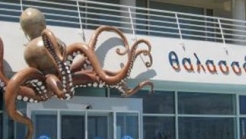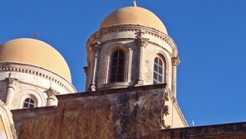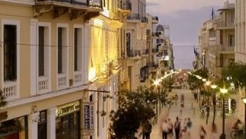

Greece
The paleontological collection of the Municipality of Rethymnon, which consists of findings from excavations from all over the prefecture by German scientist Siegfired Kuss (University of Freiburg), will form the basis of the exhibition. The Goulandris foundation has been looking after this collection in collaboration with the University of Athens (Historical Geology and Palaeontology Faculty).
The paleontological Museum Rethymno is located in area Mastambas, mosque Beli Pasha. It is believed that the mosque was built on the Venetian church of San Onoufrios. It has some unique features such as the main door and the minaret which is the oldest in Rethymnon (1789).
Garden 2.5 acres, have already planted trees and plants which flourish in Crete such olive trees, carob, Cretan palm trees, oleanders and laurels and shrubs such as wild rose-trees, will also come across many schinos, Myrties Stone Houses, lavender, diktamo, osier, rosemary and wild lavender.
The paleontological Museum Rethymno mosque Veli Pasha opened on July 10, 2008.


The Cretaquarium gives the chance to its visitors for a unique «dive» to the wonderful sea world of the Mediterranean.


The Monastery of Agia Triada of Τzagkarolon was built in the early 17th century by wanne Ιeremia and Larentio,venetian-cretan family of Τzagkarolon in smaller, property of hieromonk Joachim and Sofianou.


It is a paved road that leads from the Lions Square to the 18 British Square on the port. During the Venetian period was a very important street because in this were the Loggia, the Basilica of St. Mark, the Ducal Palace and the Palace of the Admiral.
1039 Ε 6061 01515 00